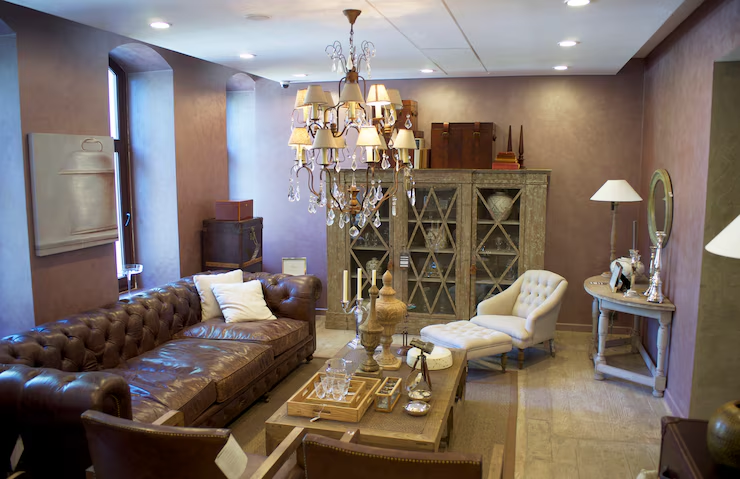
Creating a well-designed home isn’t about following trends or having the biggest budget — it’s about making thoughtful decisions that reflect how you actually live. Yet even with the best intentions, it’s easy to make design choices that quietly limit comfort, flow, and long-term satisfaction. Here are 10 common interior design mistakes — and how to approach them differently.
1. Designing Room-by-Room Without a Cohesive Plan
When each space is tackled in isolation, the home can end up feeling more like a series of vignettes than a unified whole. Shifting styles, materials, or tones room to room can create a jarring effect that makes the space feel disjointed. Instead, begin with a broader design concept. Establish a material palette, colour language, and layout rhythm that guides the overall feel of the house. Each room can still have its own personality — but it should feel like part of a wider conversation.
2. Prioritising Aesthetics Over Function
It’s tempting to focus on looks — especially when browsing Pinterest or moodboards — but real comfort lies in the details: storage, layout, durability. A beautiful space that doesn’t work in practice quickly loses its charm. Start by designing for the way you live. Consider movement, maintenance, and daily habits. A well-structured interior design process should begin with lifestyle, then bring in style to support it — not the other way around.
3. Ignoring Natural Light
Light shapes every aspect of a room’s feel — and yet it’s often an afterthought. Poor natural light planning can result in dark corners, unwanted glare, or missed opportunities to frame a view. Spend time observing each room at different times of day. Use lighter tones to reflect daylight where needed, and soften bright areas with layers like sheers or matte textures. Position mirrors and reflective surfaces strategically to bounce light deeper into the room.
4. Overfilling the Space
Even in larger homes, too much furniture or visual clutter can make a space feel tight and overbearing. Overfilled rooms are harder to navigate and can detract from otherwise good design work. Embrace the power of restraint. Give each piece of furniture breathing room. Use fewer, larger statement pieces rather than many small ones. Leave some surfaces bare. Negative space isn’t empty — it’s essential.
5. Choosing Trends Over Timelessness
Design that’s overly trend-led can feel outdated within a couple of years. What feels bold and fresh today might quickly date — especially with colours, tiles, or cabinetry. That doesn’t mean avoiding trends altogether — just ground them in a timeless framework. Keep core features classic and bring in trend-led elements through art, textiles, or smaller accessories that are easier to update down the line.
6. Forgetting About Circulation Space
A great layout isn’t just about where things go, but how you move around them. When furniture interrupts natural walkways or corners feel tight, the room becomes harder to enjoy. Always allow for clear circulation. Leave comfortable walking space around seating, tables, and entryways. Think beyond static layouts — consider how people enter, exit, and use the room throughout the day.
7. Using Lighting as an Afterthought
Lighting is often one of the last things to be installed — and it shows. A single ceiling pendant or mismatched collection of table lamps rarely gives a room the depth and flexibility it needs. Instead, layer your lighting. Use a mix of ambient, task, and accent sources. Install dimmers where possible. Think about how the room shifts from daytime to evening — and plan lighting to support that change in mood and activity.
8. Relying Too Heavily on One Material
Using the same finish repeatedly — like all-brass hardware or endless white marble — can make a space feel flat, no matter how high-end the materials. It risks looking more like a showroom than a home. Introduce contrast and texture through mixed materials. Offset hard with soft, warm with cool, glossy with matte. You don’t need to over-style — just aim for balance and variation that feels intentional, not excessive.
9. Designing Without Considering Storage
Design that forgets storage might look good on day one, but it struggles in real life. Overflowing shelves, makeshift baskets, and cluttered counters quickly undo the impact of beautiful finishes and styling. The best interiors build storage into the design. From full-height cabinetry to concealed joinery or dual-purpose furniture, storage should feel like a natural part of the room — not a necessary evil.
10. Overlooking the Ceiling
Ceilings are often ignored — left plain white and forgotten. But they can do so much more than just ‘disappear’. Used well, they add character, warmth and even a sense of drama. Think beyond white paint. Consider soft colour to bring warmth, or detail like coving, beams, or subtle wallpapering to add texture. Especially in smaller spaces, continuing wall colour onto the ceiling can create a seamless, calming effect that feels enveloping and deliberate.
